When your local farmers market is brimming with ripe tomatoes, make this fermented salsa recipe. It's an easy recipe brimming with live cultures and is a delicious way to load up on your good microbes.
Plenty of fresh cilantro and just the right amount of chili peppers give this salsa a vibrant flavor, and it'll quickly become your favorite summer salsa.
Jump to Recipe | What is it? | Key Ingredients | Special Equipment | How to Make It | Tips | Variations | Questions
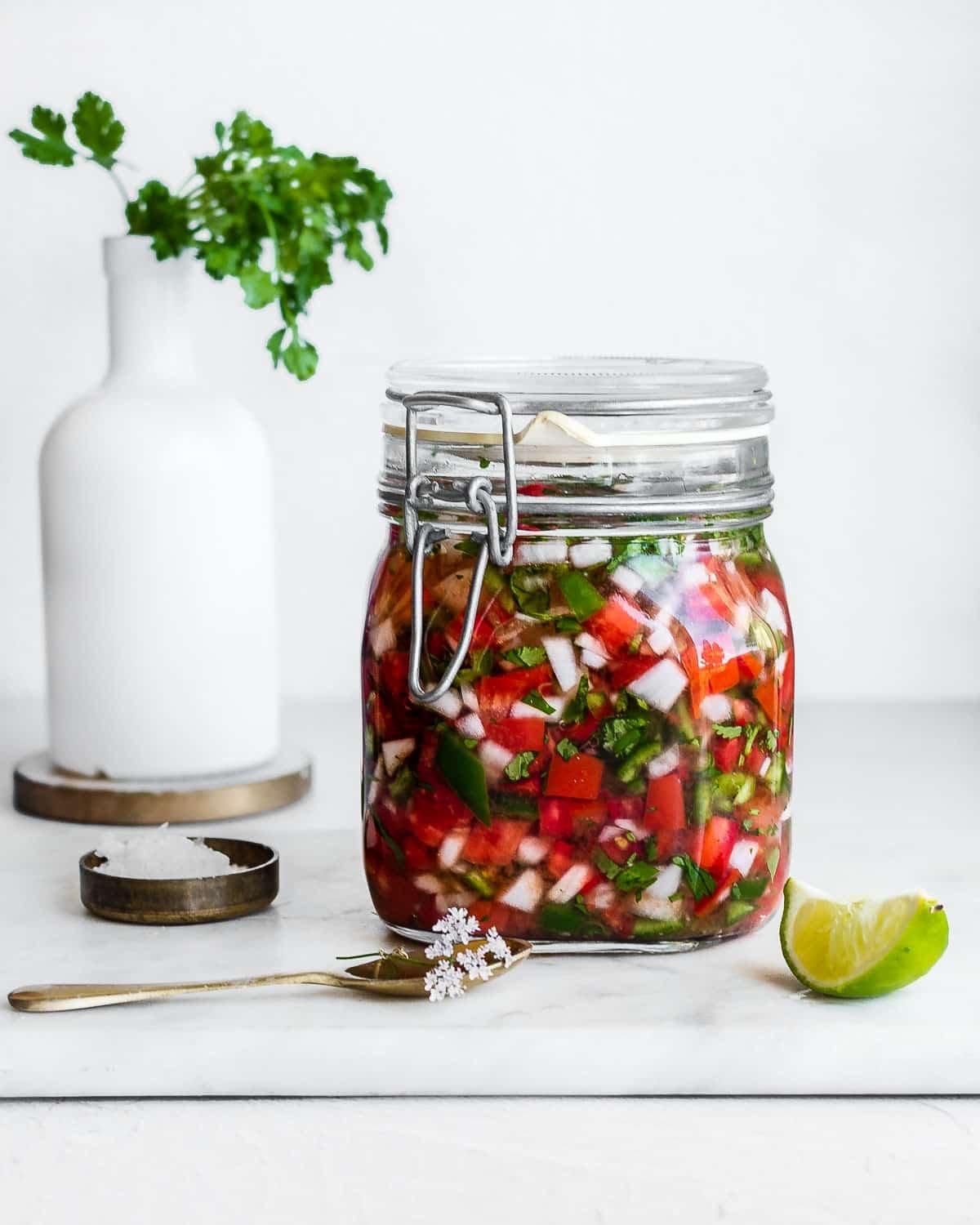
What is it?
Fermented salsa is popular among fermentation enthusiasts. It joins the ranks along with homemade sauerkraut, kimchi, sour pickles, and other favorite fermented vegetable recipes.
You prepare a fresh salsa and then allow it to ferment by adding a starter culture, such as sauerkraut juice or fresh whey, or through natural, wild fermentation methods. The result is a slightly sour, complexly flavored salsa that’s teeming with good-for-your-gut beneficial bacteria.
Why you should make this recipe
You’ll use a basic pico de gallo made with tomatoes, onion, fresh jalapenos, and cilantro as your base. It’s easy to make and an excellent foundational recipe you can tweak according to your personal taste.
Fermented salsa ferments quickly and only needs a couple of days on your countertop, unlike sauerkraut, which typically requires several weeks to months to ferment properly.
Probiotic foods, like this salsa, are an excellent source of good bacteria. Researchers consider them to be functional foods, meaning your body gets plenty of health benefits beyond nutrition alone - especially for gut health and your immune system.
It tastes amazing - like a regular salsa amplified with plenty of acidity and salt. The result is a probiotic powerhouse with a robust, complex flavor.
Fermentation is an excellent way to preserve the harvest. So if you have an excess bounty of fresh tomatoes from the garden, you can minimize food waste. Fermenting your homemade salsa is a great way to increase its shelf-life and preserve it for a long time.
Key Ingredients
The ingredients for fermented salsa are similar to those for any regular salsa. You’ll need tomatoes, onion, chilis, and similar ingredients. The difference is that, for a fermented version, you’ll likely use a touch more salt and may use a starter culture to speed up fermentation if you like.
- Tomatoes are the foundation of this recipe. Use fresh, ripe tomatoes with a firm, meaty texture. Plum and Roma tomatoes work best, but you can also use cherry tomatoes and heirloom varietals if that’s what you have.
- Onion provides a pleasant, sharp bite that mellows with fermentation. White onion works particularly well, but red onion is also a good option.
- Garlic provides depth, similar to chopped fresh onion. In the early summer, you can also use garlic scapes instead of cloves.
- Hot peppers lend a piquant note to the salsa. We prefer jalapeños with their mid-level heat. If you prefer a hot salsa, serranos or even habanero peppers are good in this recipe, too.
- Cilantro brings a punch of green with its pleasant herbaceous, citrusy notes.
- Fresh lime compliments the flavor of cilantro and brings a pleasant citric note to the salsa, and balances the acid created during fermentation.
- Minimally processed salt, such as sea salt, helps to create the optimal environment for fermentation. It also gives fermented salsa flavor.
- Starter cultures, such as a little leftover brine from your pot of fermented hot sauce or kimchi, can boost fermentation activity. While it’s a helpful addition, it’s not strictly necessary.
Fermentation Supplies
In addition to salsa ingredients, you’ll need a few fermentation supplies, such as jars and lids. Further, specialized equipment such as airlocks and glass weights improve your fermented foods by minimizing the risk of contamination by mold or bad bacteria.
- Wide-mouth mason jars are excellent for fermentation, but glass jars with a rubber gasket and clamps are also effective.
- An airlock, fermentation lid, or similar seal allows the carbon dioxide that builds up during fermentation to escape while preventing oxygen from entering your jar. This combination creates the optimal environment for lacto-fermented salsa and other fermented foods.
- Glass weights help keep the salsa submerged while it ferments. Weighing down your vegetables as they ferment helps to prevent the formation of mold, which will spoil your ferments.
Other Fermented Foods You'll Love
How to Make Fermented Salsa
- Prepare your tomatoes and onions by chopping them into small pieces about ¼-inch thick. Place them in a large mixing bowl.
- Finely chop the chili peppers, garlic, and cilantro, and then add them to the tomatoes and onion.
- Combine it all together. Stir in the lime juice, starter culture (if using) or water), and salt. Let it sit for about 15 minutes so that the salt breaks down the cell walls of the vegetables, producing a watery brine.
- Gently press the salsa into your jar, taking care not to remove any air bubbles. The liquid created by pressing the ingredients should cover the salsa. If not, add any reserved liquid in the bowl, additional starter, or salt water.
- Add your weights so that the salsa remains below the level of brine. Then seal the jar, and wait.
Recipe Tips
- Use only fresh, high-quality ingredients for your ferments. Over-ripe tomatoes, shriveled jalapenos, and wilted cilantro will produce a lower-quality salsa and are more likely to introduce bad bacteria into your salsa.
- Wear kitchen gloves when handling chilies to prevent transferring capsaicin to your face or eyes.
- Equipment matters. Fermentation weights and airlocks make preparing fermented salsa and similar foods easier and more reliable. If you don’t have them, seal everything in a mason jar with a tight-fitting lid. Then shake the jar and burp it twice daily until you transfer it to the fridge.
- Set the jar inside a bowl or on a plate, as excess juice may leak from the sealed container when fermentation is most active.
- The optimal fermentation time is about 3 days. Fermentation speeds up in hot kitchens and slows down in cool ones, so your salsa may be ready earlier (or later) than the recipe suggests. Use your judgment, with 2 to 4 days as a good guide.
- Keep your jar away from direct sunlight, which can have wildly fluctuating temperatures. You don’t need to place it in a dark place, such as a cupboard, but a spot on your counter with a consistent temperature is perfect.
- Keep vegetable matter fully submerged in the brine to prevent mold formation.
- Fizzing, foaming, and bubbling are normal and a sign that fermentation is active.
- Transfer it to cold storage, such as a fridge, when ready. Cold temperatures inhibit fermentation, and it will keep for several weeks.
How to Serve It
Serve it just as you would your favorite salsa. Its vibrant, tangy flavor makes the salsa the perfect accompaniment to tortilla chips. Or try a spoonful on your fish tacos, taco salads, or added to a burrito. In addition, I like to fold it into scrambled eggs in the morning or add it to homemade chili as well.
Love this recipe? There's more.
Join Nourished Kitchen's Cooking Club for ad-free browsing, nourishing monthly meal plans, and access to all our premium downloads.
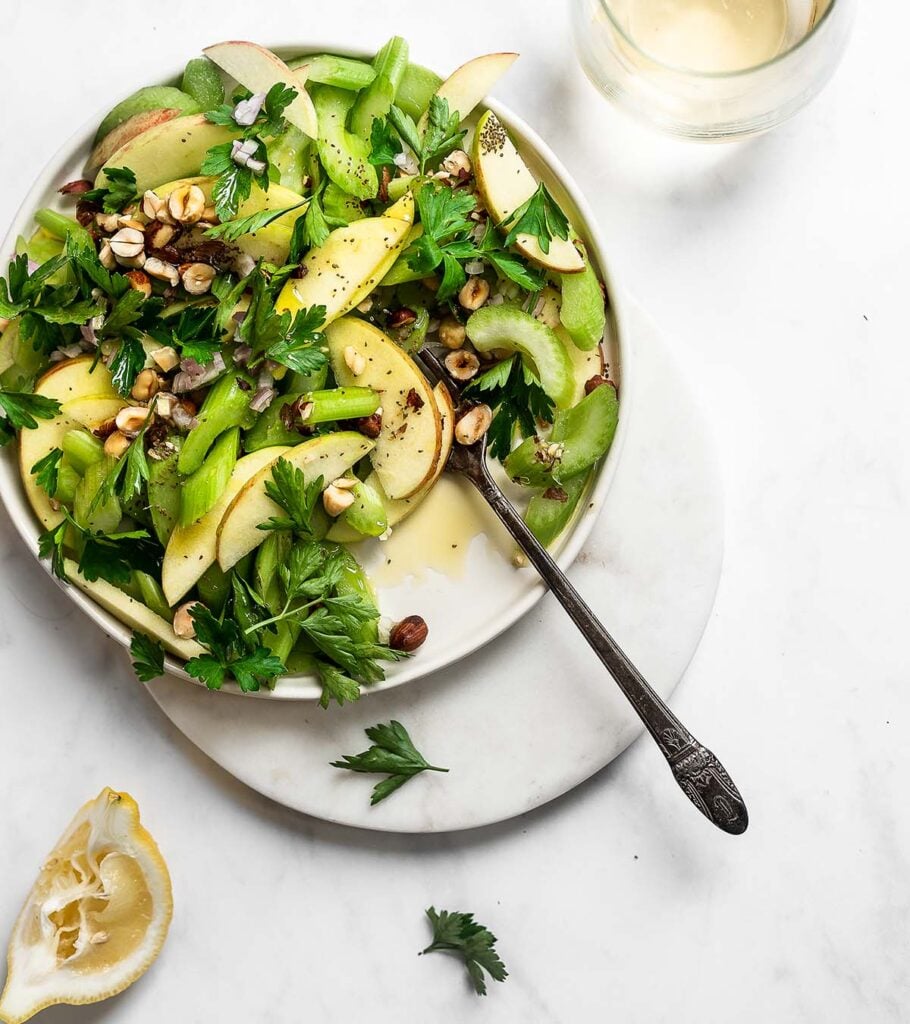
Using a Starter Culture
Since fermented salsa is a quick ferment, it’s a good idea to use a starter culture. Starter cultures already contain plenty of live, active bacteria, and they can kickstart the fermentation process safely. Appropriate starters for this recipe include the brine from other fermented vegetables, such as pickles, sauerkraut, and kimchi.
You may also use a commercial starter if you prefer. Commercial starters are probiotic powders that are designed for fermentation.
Alternatively, you can use the wild fermentation method, which relies solely on the good bacteria already present in your kitchen and on your vegetables. If so, you may find that your salsa takes a little longer before it’s ready
Variations + Substitutions
If you prefer a particularly spicy salsa, consider adding Scotch bonnets, aji amarillo peppers, or even a Carolina reaper. Cherry peppers are also delish, as are fresno peppers.
It’s okay to add spices, too. Cumin and coriander are both delicious in salsa, and you can add a teaspoon of either to the salsa when you add the salt.
Tomatillos make a nice substitute for tomatoes. You might even want to give this fermented salsa verde recipe a try.
Pineapple, mango, and other fruit can replace the tomatoes in this recipe. They may ferment even faster than tomatoes, thanks to their sugar content.
If you prefer salsa with a finer, less chunky consistency, consider chopping all your ingredients in a food processor.
Recipe Questions
How long does it keep?
Store the salsa in a tightly sealed container in the fridge or root cellar for up to 2 months.
Can I freeze it?
Yes. This salsa freezes well; however, freezing may damage some of the probiotics.
Do I need to burp the jars?
If you use an airlock or lid designed for fermentation, you do not need to burp the jar. If you use a plain mason jar with a plain lid or a jar with a clamped lid, you will need to burp the jar twice daily, especially at the peak of fermentation.
What do I do if I don’t have the right equipment?
Fermentation jars, seals, weights, and airlocks are extremely helpful in preparing fermented foods safely. If you do not have the appropriate equipment, there's an easy way to manage. Put the salsa in a mason jar. Shake the jar every day, as it helps prevent mold formation. You also need to burp the jar twice daily to allow excess gas to escape.
What kind of salt should I use for fermentation?
I recommend any minimally processed and additive-free salt, such as sea salt or Real Salt. Iodized salt may leave a faint, metallic flavor to the salsa.
Should I pour olive oil at the top of the jar while the salsa ferments?
No, it's not necessary. There is also some concern among food safety experts that adding olive oil as a surface barrier to ferments may put you at risk for botulism. While this is a concern among some fermentation experts, there is no documented case that would create cause for concern. Still, the practice is unnecessary with the right equipment and technique, so it's best to leave it out.


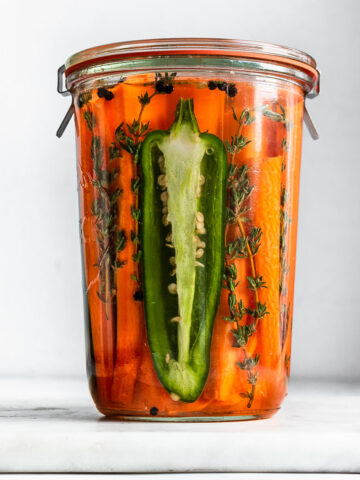
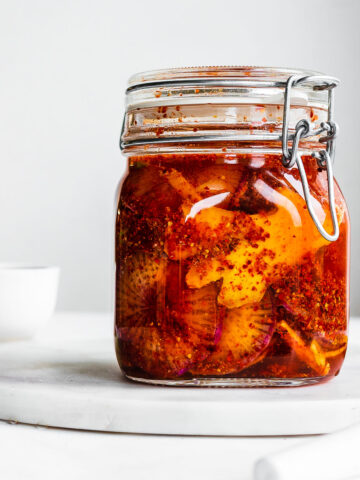
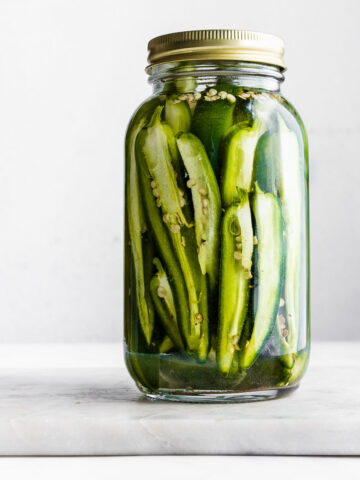
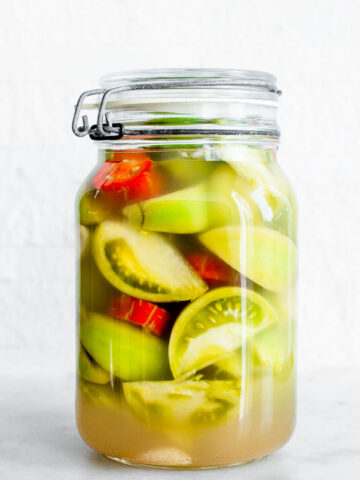
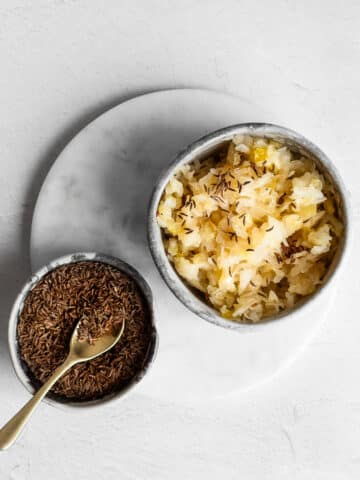
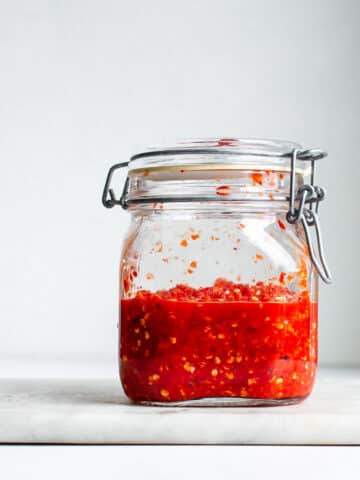
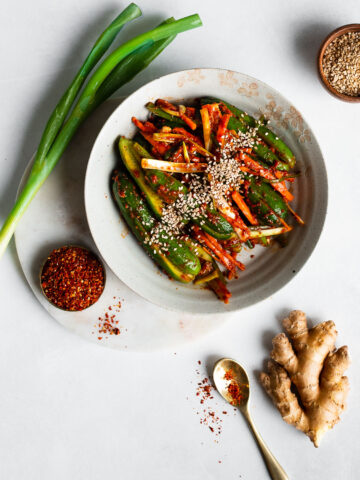
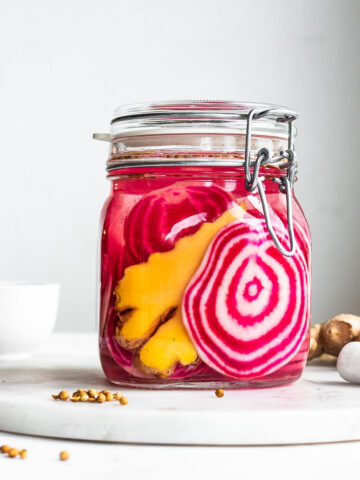
Ria says
wow it's soo great
georgia tr.- says
Thank you for this great recipe and tips! Very inspiring, as most of your recipes I have tried so far; mainly fermented stuff!
Richard Holub says
I tried this recipe and after 4-5 days it smell nice. Today I took some salsa out of the jar to taste and it tasted fine but every spoonful I took had a slimy drip. Is that normal? I tasted it and it appeared to be fine but just curious about the consistency.
Jenny McGruther says
Hi Richard! A viscous texture in ferments usually indicates contamination by yeast. Some strains of bacteria can also produce a viscous texture. External sources of bacteria (like adding fresh whey) can also create an unpleasant texture sometimes. More than that, you can sometimes see the same problem arise if the temperature isn't quite right (too high or too low). I throw away ferments with unappealing textures.
Pat says
Made this with the last of my homegrown tomatoes. So good
Ballal says
Also making this with most likely, my last harvest of homegrown tomatoes. Also using my own lemon drop chili's and homegrown onions and garlic 🙂
Very excited about tasting it. Thank you!
LEAH says
Love this! We made it this weekend with the last of our tomatoes and peppers.